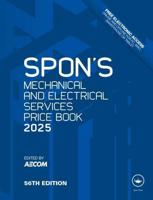Publisher's Synopsis
Achieving state-of-the-art excellence and attaining the cost reductions associated with outstanding logistics efforts is an obvious gain in terms of competitive edge and profitability. As logistics tools evolve in comprehensiveness and complexity, and the use of these new tools becomes more pervasive, maintaining a position of leadership in logistics functions also becomes increasingly difficult. And in spite of its importance not only to the bottom line but also to the functionality of your operations, logistics improvement often lags industry requirements.Taking a unique engineering approach, the Logistics Engineering Handbook provides comprehensive coverage of traditional methods and contemporary topics. The book delineates basic concepts and practices, provides a tutorial for common problems and solution techniques, and discusses current topics that define the state of the logistics market. It covers background information that defines engineering logistics, activities and implementation, transportation management, enabling technologies, and emerging trends. Each chapter includes either a brief case study overview of an industrially motivated problem or a tutorial using fabricated data designed to highlight important issues. Presentation, organization, and quality of content set this book a part. Its most distinctive feature is the engineering focus, instead of the more usual business/supply chain focus, that provides a mathematically rigorous treatment without being overly analytical. Another important characteristic is the emphasis on transportation management, especially freight transportation. The section on emerging and growing trends makes the handbook particularly useful to the savvy logistics professional wishing to exploit possible future trends in logistics practice. The handbook is a one-stop shopping location for logistics engineering reference materials ranging from basics to traditional problems, to state-of-the-market concerns.










